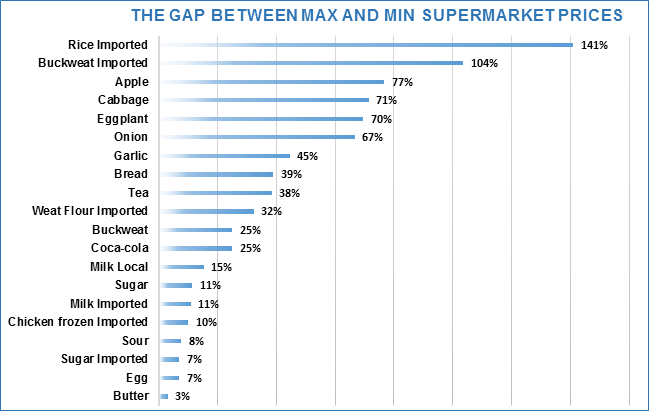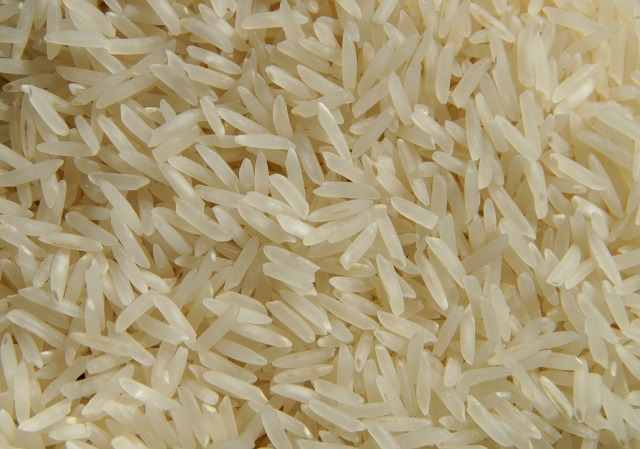Retail FPI | Just How Competitive Is the Georgian Food Retail Market?
The ISET Economist, a blog about economics in Georgia and the South Caucasus by the International School of Economics at TSU (ISET)
Georgian retail food prices are up 1.1% y-o-y (May 2016 vs. May 2015) and 1.0% down m-o-m (compared to last month). Compared to mid-May, cheese, apple and carrot experienced the biggest price declines of 8.5%, 8.4 % and 7.1%, respectively. The prices of cabbage, buckwheat and peach are up by 8.3%, 8.3% and 7.1%, respectively.
WHY DOES “THE LAW OF ONE PRICE” NOT HOLD IN THE GEORGIAN FOOD RETAIL SECTOR?
Looking at how different are the price tags for the same exactly goods offered by Tbilisi supermarkets, one may wonder what’s going on. Why is one supermarket chain able to get away with pricing imported rice or buckwheat more than twice more expensively than its competitors? By the same token, why aren’t Georgian consumers able to punish the pricy sellers by switching to alternative outlets?

At first sight, Tbilisi food retail sector appears to violate the so-called “law of one price”, according to which, identical goods should sell for the same price in all nearby locations (this law allows for prices to be different due to transportation costs but not much else). It is based on the reasonable assumption that consumers would eventually eliminate any arbitrage opportunities by voting with their feet and wallets against unreasonably expensive sellers.
As we can see in the data, the law of one price appears to hold quite nicely when it comes to such products as butter, eggs, frozen chicken, milk, and matsoni. The price gap for these foods falls in the 3%-15% range, which may reflect normal differences in the quality of shopping experiences offered by different chains (parking, product range and variety, service quality, etc.).
The very large variation (in the 45%-77% range) in the prices of fruits and vegetables, such as apple, cabbage, eggplant, onion and garlic, one the other hand, is not surprising at all. Fresh products are anything but identical. They are produced by many companies, and come in different size, form, taste and smell. Some consumers may be loyal to a particular color (e.g. red onion), producer (BiuBiu) or region (Dighomi tomatoes, Kakhetian cucumbers), which is reason enough for the law of one price NOT to hold.
There is no simple way, however, to explain the observed huge (40-141%) range between the min and max supermarket prices for absolutely identical grocery items such as rice, buckwheat, wheat flour or Coca Cola. Several explanations come to mind. One possibility is that Georgian retailers are actively using grocery products as “loss leaders”, i.e. selling them at below their market price to stimulate the sales of other more profitable goods. At the same time, retailers may be overpricing certain low-cost items assuming (perhaps correctly) that consumers would not notice the difference. Finally, it could be that some supermarket chains have to upgrade the skills of their sales personnel. A good starting point could be our bi-weekly Food Price Index publication in Georgia Today.
Salome Gelashvili is Senior Researcher at the ISET Policy Institute’s Agricultural Policy Research Center; Eric Livny is President at the International School of Economics in Tbilisi (ISET), and ISET Policy Institute.












